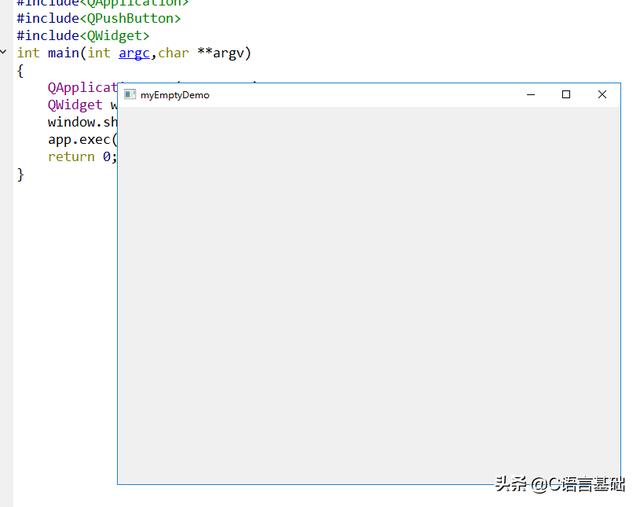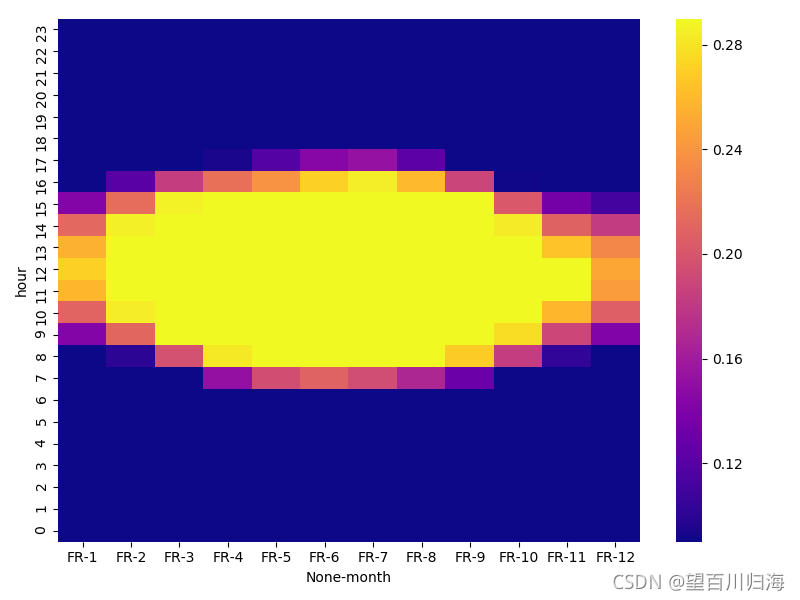登陆画面制作
一、在你的电脑里找到logonui.exe文件,通常位于c:/windows/system32目录中,复制两份,一份作为 备份,一份用来编辑。
二、用ResHacker打开logonui.exe文件。现在我们可以开始动手制作我们自己的XP登录界面了。在ResH acker中我们可以看到有UIFILE,
Bitmap,String Table,Version Info四大项。我们要修改的就是这几项。
第一项:UIFILE
a、改变背景颜色。打开:/UIFILE/1000/1033/,我们可以看到XP的原始logonui.exe的定义如下 :(可能一下子没看到,向下滚动右边的
滚动条)
把其中的颜色改变为你中意的颜色就行了。如把argb(0,0,0,0)改为argb(99,118,149)等等。如果你 不熟悉RGB值,(谁又能记得很清楚了)请下载一个叫好色鬼的软件,使用很简单。
b、改变密码的字符形状。按CTRL+F,或者选择“查看”菜单中的“查找文本”,找到:passwordcharacter。可以看到其定义为一个4位数的数字,实际是个ASCII的16位值。如下:
passwordcharacter: 9679;
fontface: "arial";
同时注意下面fontface一行,它定义了使用的字体,XP默认的是arial字体和9679,也就是你输入密码时看到的 小黑圆点。不同字体的ASCII-hex值代表的字符不一样。你可以把这段改为:
passwordcharacter: 207;
fontface: "webdings";
这是什么符号呢,你试过就知道了。一个简单的找出字符ASCII-hex值的方法是使用 微软的Word,或者任何一种字处理 软件如wps office,选择“插入”-->“符号”,然后在弹出的对话框中选择一种字体,选择某个你喜欢的符号,注意下面字符代码中的值,按此改变即可。另外要注意使用unicode字体,以免别人的机子上没有定义的字体。
c、改变登录时账户(userpane)所在的位置。在倒数第二段中定义了登录时账户所在的位置。按CTRL+F,找到
这行。
注意下面的定义,XP默认的是:
你可以选择改为:
位置变为中间靠上。注意你要清楚你打算放置账户的位置,在坐标轴x、y位置,单位为像素(pixel),建议你熟练以后再尝 试。
第三项和第四项就没有那么重要了。主要是些字符串,负责一些注释帮助提示等等内容。当然我还是推荐你在其中Version Info项加入你的名字,举个例子:
打开String Table/1/1033,按CTRL+F,找到:Turn off Computer,更改为更为个性化的“Bye-Bye my love”,诸如此类。全部修改好以后最好先保存到另外的目录。
安装使用XP LogonUI。这是最方便的方法,也是很安全的。不然你也可以按照最保险的办法进行
Logonui登录class="tags" href="/tags/JiaoBen.html" title=脚本>脚本UIFILE入门浅解 -
Windows XP的登录画面制作软件,较常见的有Logon Studio及ChameleonXP,但其制作功能仅在于XP基本登录界面的颜色.图片.文字的更换,
若是要作出较富变化的登录界面,则需对UIFILEclass="tags" href="/tags/JiaoBen.html" title=脚本>脚本手动作些搬移及大弧度的修改,目前较常见的就是仿MAC登录界面.
有鉴于网络上认识Logonuiclass="tags" href="/tags/JiaoBen.html" title=脚本>脚本数据的缺乏,在此提供个人对该class="tags" href="/tags/JiaoBen.html" title=脚本>脚本的粗浅经验,或许其中有些个人误解,期望有程序代码写作经验的网友不吝指
正,所有网友
共同研讨纠正错误,以免本人部份不正确的理解误导了网友的观念.
本篇解说以基本XP登录class="tags" href="/tags/JiaoBen.html" title=脚本>脚本为范本,仿MAC登录界面的class="tags" href="/tags/JiaoBen.html" title=脚本>脚本则待日后另文实例剖析.
(一)class="tags" href="/tags/JiaoBen.html" title=脚本>脚本码概述
整个class="tags" href="/tags/JiaoBen.html" title=脚本>脚本码粗浅可分二大区块:
1.前大半段以<style resid=......>起头,</style>结尾,共有九个小区块,我暂且称为组件定义区.
2.后小半段以<logonframe...>起始,到class="tags" href="/tags/JiaoBen.html" title=脚本>脚本码最后以</element>结束,其中再细分三个区块,我暂且称为class="tags" href="/tags/JiaoBen.html" title=脚本>脚本运行区.
class="tags" href="/tags/JiaoBen.html" title=脚本>脚本码的基本功能在于指定各区域对应的组件(文字.色块.图片.字符串值),并规范该组件动作方式及时机,显示区域,
因此各组件的数值定义和运行在二大区块中要互相对应配合,否则运行就会出错
一,常用修改部分
1. 修改背景颜色如见argb(0,0,0,0)可改为argb(99,118,149)等等;
2. 修改图片参数如见rcbmp(128,7,#FF00FF,643rp,588rp,0,0)等等
1. 125 -> 图片编号
2. 6 -> 图片显示方式 -> 0(砖块排列),1(按你指定的长宽),6(扩展),7(32bit bmp图片)
3. #ff00ff -> 指定要透明的颜色
4. 0 -> 指定图片长度
5. 0 -> 指定图片宽度
6. 1 -> 0=使用指定长宽,1=使用图片长宽
7. 0 -> 0=不作变化,1=映射
还有下面的九宫格参数.大方向位置搞定后再辅以padding: rect(0rp,0rp,22rp,0)左,上,右,下,这类填空指令作偏移设定,取得想要的精确布局.位置九宫格代号参数class="tags" href="/tags/JiaoBen.html" title=脚本>脚本码中对于组件位置的指定和对齐,常用的就是中(client)上(top)下(bottom)左(left)右(right)上右(topright)下左(bottomleft)...,
6 4 7
1 0 2
5 3 8
(二)XP登录class="tags" href="/tags/JiaoBen.html" title=脚本>脚本码逐项解说
(1)各元件之定义
在class="tags" href="/tags/JiaoBen.html" title=脚本>脚本文件的上半部,以<style resid= ...>起头,</style>结尾
此元件定义区共分以下九个小区块
1.中间画面
此段class="tags" href="/tags/JiaoBen.html" title=脚本>脚本码指定了全局底色,中间画面顏色及USER(各帐户)按键共用底图等三个元件
<style resid=framess>
element
{
background: argb(0,0,0,0);
#定义全画面背景為带透明通道的黑色rgb色块(此argb定义让覆盖在上面的图片可指定透明色)
}
element [id=atom(contentcontainer)]
{
background: rgb(90,126,220);
#指定中间画面為水蓝色rgb色块(覆盖於上面定义的黑色背景之上)
}
class="tags" href="/tags/BUTTON.html" title=button>button
{
background: rcbmp(112,6,#FF00FF,0,0,1,0);
#指定USER按键底图為编号112的bmp图片,扩展排列,透明色為桃红色,使用图片的长宽度
borderthickness: rect(8,8,0,8);
#设定该按键底图加外框,左8上8右0下8(pix)
}
</style>
2.上画面
此段class="tags" href="/tags/JiaoBen.html" title=脚本>脚本码指定了上画面顏色及上分隔线图片二个元件
<style resid=toppanelss>
element
{
background: argb(0,0,0,0);
#定义上画面背景為带透明通道的黑色rgb色块
}
element [id=atom(toppanel)]
{
background: rgb(0,48,156);
#指定上画面為深蓝色rgb色块
}
element [id=atom(divider)]
{
background: rcbmp(125,6,#FF00FF,0,0,1,0);
#指定上分隔线為编号125的bmp图片
}
</style>
3.下画面
此段class="tags" href="/tags/JiaoBen.html" title=脚本>脚本码指定了下画面顏色.下分隔线图片.关机按键.退出按键.文字讯息等元件
<style resid=bottompanelss>
element
{
background: argb(0,0,0,0);
#定义下画面背景為带透明通道的黑色rgb色块
}
element [id=atom(bottompanel)]
{
background: gradient(argb(0,57,52,173), argb(0,0,48,156), 0);
#指定下画面為由argb紫色?向渐层至argb深蓝色
fontface: rcstr(2);
#指定下画面使用的字体依String Table(字串值)资源编号2所设定之字串值,本例為tahoma字体
}
element [id=atom(divider)]
{
background: rcbmp(126,6,#FF00FF,0,0,1,0);
#指定下分隔线為编号126的bmp图片
}
element [id=atom(options)]
{
padding: rect(25rp, 20rp, 25rp, 20rp);
#指定对下画面中的元件填入距离空间左25上20右25下20
}
此功能作用的元件包恬power按键.unduck按键.instruct讯息
class="tags" href="/tags/BUTTON.html" title=button>button
{
fontsize: rcint(42) pt;
#指定上列按键上文字大小依String Table(字串值)资源编号42设定显示
foreground: white;
顏色白.及鼠标在按键上时以手状显示
cursor: hand;
}
class="tags" href="/tags/BUTTON.html" title=button>button [mousefocused]
{
fontstyle: underline;
#鼠标移到关机.退出按键时按键讯息文字加下横线显示
}
class="tags" href="/tags/BUTTON.html" title=button>button [keyfocused]
{
fontstyle: underline;
#以键盘快捷移到关机.退出按键时按键讯息文字加下横线显示
}
element [id=atom(instruct)]
{
contentalign: wrapleft;
#右下角的讯息文字智能向左对齐
padding: rect(18rp,0,0,0);
#该讯息文字左方增加18pix的空间
fontsize: rcint(43) pt;
#指定讯息文字大小依String Table(字串值)资源编号43设定显示
foreground: white;
#指定讯息文字為白色
}
</style>
4.左画面
左画面覆盖在中间画面的左半部,包括Windows Logo,欢迎字样及其阴影,登入登出时的系统讯息(help)
<style resid=leftpanelss>
element
{
background: argb(0,0,0,0);
fontface: rcstr(1);
#指定左画面使用的字体依字串值资源编号1设定显示,此例為arial字体
}
element [id=atom(product)]
{
class="tags" href="/tags/ANIMATION.html" title=animation>animation: alpha | s | mediumslow;
#指定Logo图片以透明动画显示,速度為中慢
}
element [id=atom(leftpanel)]
{
foreground: rgb(239,247,255);
}
element [id=atom(welcome)]
{
fontstyle: italic;
#指定欢迎文字样式为斜体
fontsize: rcint(44) pt;
fontweight: bold;
#增加指定文字样式为粗体
padding: rect(0rp,0rp,22rp,0);
#向右增加22pix空间
contentalign: topright;
#指定文字置於右上(此例左画面指定位置為中间,因此实际為中间右上)
}
element [id=atom(welcomeshadow)]
{
foreground: rgb(49,81,181);
fontstyle: italic;
fontsize: rcint(44) pt;
fontweight: bold;
padding: rect(2rp,3rp,20rp,0);
#指定欢迎文字阴影增加空间為左2上3右20下0
contentalign: topright;
显示出来的效果為向右2向下3偏移的阴影
}
element[id=atom(help)]
{
fontsize: rcint(45) pt;
padding: rect(81rp,81rp,0,0);
contentalign: wrapright;
#設置登入登出訊息顯示位置為智能向右靠齊
}
</style>
5.右画面
右画面覆盖在中间画面的右半部,包括中间分隔线.使用者显示窗口及其控制滑桿.
<style resid=rightpanelss>
element
{
background: argb(0,0,0,0);
}
element [id=atom(divider)]
{
background: rcbmp(124,6,#FF00FF,0,0,1,0);
#设置中间分隔线图片
}
scrollbar [vertical]
#设置窗口滑桿為垂直显示
{
class="tags" href="/tags/LAYOUT.html" title=layout>layoutpos: nineright;
#设置窗口滑桿位置在右画面以九宫格配置的右边
background: rgb(115,146,231);
}
viewer
{
class="tags" href="/tags/LAYOUT.html" title=layout>layoutpos: nineclient;
#设置窗口位置在右画面以九宫格配置的中央
}
thumb
{
background: rcbmp(111,6,#FF00FF,0,0,1,0);
borderthickness: rect(3,3,3,3);
#设置窗口滑桿有3pix细框
}
repeatclass="tags" href="/tags/BUTTON.html" title=button>button [id=atom(lineup)]
{
content: rcbmp(110,3,-1,sysmetric(20),sysmetric(20),0,0);
#设置滑桿向上图片
}
repeatclass="tags" href="/tags/BUTTON.html" title=button>button [id=atom(linedown)]
{
content: rcbmp(109,3,-1,sysmetric(20),sysmetric(20),0,0);
#设置滑桿向下图片
}
</style>
6.使用者显示窗口(以鼠标操作时)
使用者显示窗口在鼠标进入窗口热区时,各元件显示设置,包括使用者帐户.名称.头像及其系统目前运行状态
<style resid=hotaccountlistss>
element
{
background: argb(0,0,0,0);
fontface: rcstr(3);
}
selector
{
padding: rect(0rp,26rp,5rp,26rp);
#这就是登陆按钮的位置设定,上下左右自己调节吧(第7部分对应也要修改成一样的,否则会出现按纽易位的现象)
}
logonaccount
{
cursor: hand;
foreground: rgb(239,247,255);
background: rgb(90,126,220);
# 帐户信息背景颜色为天蓝色
class="tags" href="/tags/ANIMATION.html" title=animation>animation: alpha | log | fast;
#鼠标进入热区时使用者帐户呈现快速透明动画效
果
alpha:96;
#鼠标进入热区后各使用者帐户以透明度96显示(0~255)
}
logonaccount [logonstate=1]
#帐户人登入时的动画显示设定
{
class="tags" href="/tags/ANIMATION.html" title=animation>animation: rectangle | s | mediumfast;
cursor: arrow;
alpha:255;
}
logonaccount [mousewithin]
#鼠标指向个别帐户时的状态
{
cursor: hand;
alpha:255;
}
logonaccount [selected]
#鼠标选取个别帐户时的状态
{
cursor: hand;
alpha:255;
}
element [id=atom(userpane)]
#帐户背景
{
padding: rect(2rp,2rp,14rp,2rp);
borderthickness: rect(5,5,0,5);
#指定帐戶背景外框粗細
bordercolor: rgb(90,126,220);
#指定帐戶背景外框颜色
fontsize: rcint(45) pt;
}
element [id=atom(userpane)][selected]
{
background: rcbmp(112,6,#FF00FF,0,0,1,0);
#帐户背景在鼠标选取时显示图片112
}
logonaccount [selected]
{
alpha: 255;
}
element [id=atom(pictureframe)]
#设置帐户头像底图
{
background: rcbmp(113,7,255,0,0,1,0);
borderthickness: rect(5,5,5,5);
margin: rect(0,0, 7rp,0);
#设置帐户头像底图右侧距离帐户名及密码7pix
}
element [id=atom(pictureframe)] [mousefocused]
#设置鼠标指向帐户头像时的效果
{
background: rcbmp(119,7,255,0,0,1,0);
borderthickness: rect(5,5,5,5);
margin: rect(0,0,7rp,0);
alpha: 255;
}
element [id=atom(pictureframe)] [selected]
#设置鼠标按下帐户头像时的效果
{
background: rcbmp(119,7,255,0,0,1,0);
borderthickness: rect(5,5,5,5);
margin: rect(0,0,7rp,0);
alpha: 255;
}
element [id=atom(username)]
#设置用户名
{
foreground: rgb(239,247,255);
#设置用户名颜色
contentalign: endellipsis;
#设置帐户名向左对齐,帐户名后加空白直到最后,以让密码从下一行开始显示
}
class="tags" href="/tags/BUTTON.html" title=button>button [class="status"]
#以下為使用者系统状态(例如:有几个程式正在运行)各项显示设置
{
background: argb(0,0,0,0);
foreground: rgb(0,48,156);
fontsize: rcint(46) pt;
fontweight: bold;
}
class="tags" href="/tags/BUTTON.html" title=button>button [class="status"][mousefocused]
{
fontstyle: underline;
}
class="tags" href="/tags/BUTTON.html" title=button>button [class="status"][keyfocused]
{
fontstyle: underline;
}
class="tags" href="/tags/BUTTON.html" title=button>button [class="status"][selected]
#当前用户状态信息,比如多少程序正在运行
{
foreground: rgb(239,247,255);
fontsize: rcint(46) pt;
fontweight: bold;
}
</style>
7.使用者显示窗口(以键盘操作时)
本处设置和6相同,只是少了一些鼠标效果,不再赘述.
<style resid=accountlistss>
element
{
background: argb(0,0,0,0);
fontface: rcstr(3);
}
selector
#跟第6部分的一样,也是修改登陆按钮位置,务必2个位置偏移量保持一样
{
padding: rect(0rp,26rp,5rp,26rp);
}
logonaccount
{
cursor: hand;
class="tags" href="/tags/ANIMATION.html" title=animation>animation: alpha | log | fast;
background: rgb(90,126,220);
}
logonaccount [logonstate=1]
{
class="tags" href="/tags/ANIMATION.html" title=animation>animation: rectangle | s | mediumfast;
cursor: arrow;
}
element [id=atom(userpane)]
{
padding: rect(2rp,2rp,14rp,2rp);
borderthickness: rect(5,5,0,5);
bordercolor: rgb(90,126,220);
fontsize: rcint(45) pt;
}
element [id=atom(userpane)][selected]
{
background: rcbmp(112,6,#FF00FF,0,0,1,0);
}
element [id=atom(pictureframe)]
{
background: rcbmp(113,7,255,0,0,1,0);
borderthickness: rect(5,5,5,5);
margin: rect(0,0,7rp,0);
}
element [id=atom(username)]
{
foreground: rgb(239,247,255);
contentalign: endellipsis;
}
class="tags" href="/tags/BUTTON.html" title=button>button [class="status"]
{
background: argb(0,0,0,0);
foreground: rgb(0,48,156);
fontsize: rcint(46) pt;
fontweight: bold;
contentalign: wrapleft;
}
class="tags" href="/tags/BUTTON.html" title=button>button [class="status"][mousefocused]
{
fontstyle: underline;
}
class="tags" href="/tags/BUTTON.html" title=button>button [class="status"][keyfocused]
{
fontstyle: underline;
}
class="tags" href="/tags/BUTTON.html" title=button>button [class="status"][selected]
{
foreground: rgb(239,247,255);
fontsize: rcint(46) pt;
fontweight: bold;
}
</style>
8.帐户密码区
此段class="tags" href="/tags/JiaoBen.html" title=脚本>脚本码定义了密码输入框,输入框讯息,进入及密码提示按键
<style resid=passwordpaness>
element
{
background: argb(0,0,0,0);
}
element [id=atom(passwordpanelayer)]
{
padding: rect(71rp,0,0,0);
#设置密码区左方71pix空白,避免和帐户头像重叠
}
element [id=atom(instruct)]
#设置密码输入框上面的文字(此例為Type Your Password)
{
fontface: rcstr(48);
fontsize: rcint(47) pt;
foreground: white;
padding: rect(3rp,0,0,3rp);
}
edit [id=atom(password)]
#输入密码框的各项设置
{
background: rcbmp(102,6,#FF00FF,0,0,1,0);
borderthickness: rect(3,3,5,5);
passwordcharacter: 9679;
#输入密码时显示出来的字元代号
fontface: "arial";
fontsize: 16pt;
}
class="tags" href="/tags/BUTTON.html" title=button>button [id=atom(go)]
#设置密码右方的进入按键
{
margin: rect(5rp,0,0,0);
content: rcbmp(103,3,-1,26rp,26rp,0,0);
padding: rect(0rp,1rp,0,1rp);
}
class="tags" href="/tags/BUTTON.html" title=button>button [id=atom(go)][keyfocused]
#按下进入按键时
{
content: rcbmp(104,3,-1,26rp,26rp,0,0);
}
class="tags" href="/tags/BUTTON.html" title=button>button [id=atom(info)]
#设置密码提示按键
{
margin: rect(5rp,0,0,0);
content: rcbmp(105,3,-1,28rp,28rp,0,0);
}
class="tags" href="/tags/BUTTON.html" title=button>button [id=atom(info)][keyfocused]
#设置密码提示按键按下时图片
{
content: rcbmp(106,3,-1,28rp,28rp,0,0);
}
element [id=atom(keyboard)]
#设置输入密码时的显示
{
cursor: arrow;
margin: rect(5rp,0,0,0);
}
</style>
9.窗口滑桿
此段class="tags" href="/tags/JiaoBen.html" title=脚本>脚本码以5.右画面的滑桿為基础,加入了定义滑桿的各项动作参数(避免更动)
<style resid=scroller>
scrollbar
{
class="tags" href="/tags/LAYOUT.html" title=layout>layoutpos: ninebottom;
}
scrollbar [vertical]
{
class="tags" href="/tags/LAYOUT.html" title=layout>layoutpos: nineright;
}
viewer
{
class="tags" href="/tags/LAYOUT.html" title=layout>layoutpos: nineclient;
}
thumb
{
background: dtb(handlemap(1), 3, 1);
content: dtb(handlemap(1), 9, 1);
contentalign: middlecenter;
}
thumb [mousefocused]
{
background: dtb(handlemap(1), 3, 2);
content: dtb(handlemap(1), 9, 2);
}
thumb [captured]
{
background: dtb(handlemap(1), 3, 3);
content: dtb(handlemap(1), 9, 3);
}
repeatclass="tags" href="/tags/BUTTON.html" title=button>button [id=atom(lineup)]
{
background: dtb(handlemap(1), 1, 1);
width: sysmetric(2);
height: sysmetric(20);
}
repeatclass="tags" href="/tags/BUTTON.html" title=button>button [id=atom(lineup)][mousefocused]
{
background: dtb(handlemap(1), 1, 2);
}
repeatclass="tags" href="/tags/BUTTON.html" title=button>button [id=atom(lineup)][pressed]
{
background: dtb(handlemap(1), 1, 3);
}
repeatclass="tags" href="/tags/BUTTON.html" title=button>button [id=atom(linedown)]
{
background: dtb(handlemap(1), 1, 5);
width: sysmetric(2);
height: sysmetric(20);
}
repeatclass="tags" href="/tags/BUTTON.html" title=button>button [id=atom(linedown)][mousefocused]
{
background: dtb(handlemap(1), 1, 6);
}
repeatclass="tags" href="/tags/BUTTON.html" title=button>button [id=atom(linedown)][pressed]
{
background: dtb(handlemap(1), 1, 7);
}
repeatclass="tags" href="/tags/BUTTON.html" title=button>button [id=atom(pageup)]
{
background: dtb(handlemap(1), 7, 1);
}
repeatclass="tags" href="/tags/BUTTON.html" title=button>button [id=atom(pageup)][mousefocused]
{
background: dtb(handlemap(1), 7, 2);
}
repeatclass="tags" href="/tags/BUTTON.html" title=button>button [id=atom(pageup)][pressed]
{
background: dtb(handlemap(1), 7, 3);
}
repeatclass="tags" href="/tags/BUTTON.html" title=button>button [id=atom(pagedown)]
{
background: dtb(handlemap(1), 6, 1);
}
repeatclass="tags" href="/tags/BUTTON.html" title=button>button [id=atom(pagedown)][mousefocused]
{
background: dtb(handlemap(1), 6, 2);
}
repeatclass="tags" href="/tags/BUTTON.html" title=button>button [id=atom(pagedown)][pressed]
{
background: dtb(handlemap(1), 6, 3);
}
(2)各元件动作时机及显示设定部份
这一部份就是登录界面执行动作的class="tags" href="/tags/JiaoBen.html" title=脚本>脚本码,以上面各项元件的定义作基础,设定整个界面运行时的佈局分配及事件触发时机.
以下分為三部解说.
<logonframe...>起始,</logonframe>结尾
这裡规范整个动作class="tags" href="/tags/JiaoBen.html" title=脚本>脚本的画面佈局及分配,以上面定义元件1~5的部份,作动作指定及执行.
<logonaccount...>起始,</logonaccount>结尾
这一段执行class="tags" href="/tags/JiaoBen.html" title=脚本>脚本码配合上面定义元件6.7.9部份,对帐户窗口内的各元件作佈局及指定动作.
<element resid=passwordpanel...>起始,</element>结束
这一段执行class="tags" href="/tags/JiaoBen.html" title=脚本>脚本码配合上面定义元件8部份,对帐户密码及附属元件作佈局及指定动作
下面是这三段class="tags" href="/tags/JiaoBen.html" title=脚本>脚本码的个别解说.
<logonframe resid=main id=atom(frame) sheet=styleref(framess) class="tags" href="/tags/LAYOUT.html" title=layout>layout=borderclass="tags" href="/tags/LAYOUT.html" title=layout>layout()>
<element id=atom(toppanel) sheet=styleref(toppanelss) class="tags" href="/tags/LAYOUT.html" title=layout>layout=borderclass="tags" href="/tags/LAYOUT.html" title=layout>layout() class="tags" href="/tags/LAYOUT.html" title=layout>layoutpos=top height=80rp>
#执行时上画面位於画面端,高度80
<element id=atom(divider) class="tags" href="/tags/LAYOUT.html" title=layout>layoutpos=bottom height=2rp/>
#执行时上画面分隔线位於上画面底部,高度2
</element>
<element id=atom(bottompanel) sheet=styleref(bottompanelss) class="tags" href="/tags/LAYOUT.html" title=layout>layout=borderclass="tags" href="/tags/LAYOUT.html" title=layout>layout() class="tags" href="/tags/LAYOUT.html" title=layout>layoutpos=bottom>
#执行时下画面位於画面底部,不设高度,由下方元件判断
<element id=atom(divider) class="tags" href="/tags/LAYOUT.html" title=layout>layoutpos=top height=2rp/>
#执行时下画面分隔线位於下画面端,高度2
<element id=atom(options) class="tags" href="/tags/LAYOUT.html" title=layout>layout=borderclass="tags" href="/tags/LAYOUT.html" title=layout>layout() class="tags" href="/tags/LAYOUT.html" title=layout>layoutpos=client>
#设定执行下画面时功能定义的各元件空间距离
<element class="tags" href="/tags/LAYOUT.html" title=layout>layout=borderclass="tags" href="/tags/LAYOUT.html" title=layout>layout() class="tags" href="/tags/LAYOUT.html" title=layout>layoutpos=left>
#安排下面的关机按键排列在下画面的左侧
<class="tags" href="/tags/BUTTON.html" title=button>button id=atom(power) class="tags" href="/tags/LAYOUT.html" title=layout>layout=borderclass="tags" href="/tags/LAYOUT.html" title=layout>layout() class="tags" href="/tags/LAYOUT.html" title=layout>layoutpos=top accessible=true accRole=43 accName=rcstr(11)>
#设定关机按键為可执行,位在上方,显示文字
<element class="tags" href="/tags/LAYOUT.html" title=layout>layoutpos=left content=rcbmp(107,3,-1,26rp,26rp,0,0) />
#指定关机按键图片及宽26高26
<element id=atom(label) class="tags" href="/tags/LAYOUT.html" title=layout>layoutpos=client margin=rect(2rp,0,0,0)/>
#关机文字左方设定2pix空间
</class="tags" href="/tags/BUTTON.html" title=button>button>
<class="tags" href="/tags/BUTTON.html" title=button>button id=atom(undock) class="tags" href="/tags/LAYOUT.html" title=layout>layout=borderclass="tags" href="/tags/LAYOUT.html" title=layout>layout() class="tags" href="/tags/LAYOUT.html" title=layout>layoutpos=top margin=rect(0,2rp,0,0) accessible=true accRole=43 accName=rcstr(14)>
#退出键同关机键
<element class="tags" href="/tags/LAYOUT.html" title=layout>layoutpos=left content=rcbmp(108,3,-1,26rp,26rp,0,0)/>
<element id=atom(label) class="tags" href="/tags/LAYOUT.html" title=layout>layoutpos=client margin=rect(2rp,0,0,0)/>
</class="tags" href="/tags/BUTTON.html" title=button>button>
</element>
<element id=atom(instruct) class="tags" href="/tags/LAYOUT.html" title=layout>layoutpos=right content=rcstr(25) width=325rp/>
#讯息文字,置於右方,由右算起325pix开始显示
</element>
</element>
<element id=atom(contentcontainer) class="tags" href="/tags/LAYOUT.html" title=layout>layout=flowclass="tags" href="/tags/LAYOUT.html" title=layout>layout(1,3,2,3) class="tags" href="/tags/LAYOUT.html" title=layout>layoutpos=client content=rcbmp(100,0,0,219rp,207rp,1,0)>
#设定中画面图片,砖块排列置中,宽高度
<element id=atom(leftpanel) sheet=styleref(leftpanelss) class="tags" href="/tags/LAYOUT.html" title=layout>layout=fillclass="tags" href="/tags/LAYOUT.html" title=layout>layout() class="tags" href="/tags/LAYOUT.html" title=layout>layoutpos=left>
#左画面填充模式,置左
<element id=atom(logoarea) class="tags" href="/tags/LAYOUT.html" title=layout>layout=verticalflowclass="tags" href="/tags/LAYOUT.html" title=layout>layout(0,3,3,2)>
#logo组件垂直排列(指下面的product.help)
<element id=atom(product) contentalign=topright padding=rect(0rp,0rp,20rp,20rp) content=rcbmp(123,3,-1,137,86,0,0) background=rgb(90,126,220)/>
<element id=atom(help) contentalign=wrapright width=384rp padding=rect(0rp,0rp,40rp,0rp)/>
#登入出讯息由中间算起384开始显示,并加右方40的空间距离
</element>
<element id=atom(msgarea) class="tags" href="/tags/LAYOUT.html" title=layout>layout=verticalflowclass="tags" href="/tags/LAYOUT.html" title=layout>layout(0,0,0,2) >
#欢迎讯息组件(包括Welcome及阴影)以填充模式(填Welcome文字)垂直排列
<element class="tags" href="/tags/LAYOUT.html" title=layout>layout=fillclass="tags" href="/tags/LAYOUT.html" title=layout>layout() width=384rp>
#填充宽度384
<element id=atom(welcomeshadow) content=rcstr(7)/>
]#填充文字阴影依字串值7内容显示(此例為Welcome)
<element id=atom(welcome) content=rcstr(7)/>
</element>
</element>
</element>
<element id=atom(rightpanel) sheet=styleref(rightpanelss) class="tags" href="/tags/LAYOUT.html" title=layout>layout=borderclass="tags" href="/tags/LAYOUT.html" title=layout>layout() class="tags" href="/tags/LAYOUT.html" title=layout>layoutpos=left width=384rp>
#右画面以外框模式置左,宽度384
<element id=atom(divider) class="tags" href="/tags/LAYOUT.html" title=layout>layoutpos=left width=1rp/>
#中央分隔置於右画面左侧,宽度1
<scrollviewer id=atom(scroller) sheet=styleref(scroller) class="tags" href="/tags/LAYOUT.html" title=layout>layoutpos=client xscrollable=false margin=rect(26rp,0rp,0rp,0rp)>
#帐户视窗滑桿不需要时不显示
<selector id=atom(accountlist) sheet=styleref(accountlistss) class="tags" href="/tags/LAYOUT.html" title=layout>layout=verticalflowclass="tags" href="/tags/LAYOUT.html" title=layout>layout(0,3,3,2)/> [color=Orange#帐户名单垂直排列
</scrollviewer>
</element>
</element>
</logonframe>
<logonaccount resid=accountitem id=atom(accountitem) class="tags" href="/tags/LAYOUT.html" title=layout>layout=fillclass="tags" href="/tags/LAYOUT.html" title=layout>layout() accessible=true accRole=43>
#设定使用者帐户為可执行
<element id=atom(userpanelayer) class="tags" href="/tags/LAYOUT.html" title=layout>layout=borderclass="tags" href="/tags/LAYOUT.html" title=layout>layout() height=80rp>
#每个帐户所佔高度80像素
<element id=atom(userpane) class="tags" href="/tags/LAYOUT.html" title=layout>layout=borderclass="tags" href="/tags/LAYOUT.html" title=layout>layout() class="tags" href="/tags/LAYOUT.html" title=layout>layoutpos=top>
#帐户底图位置
<element id=atom(pictureframe) class="tags" href="/tags/LAYOUT.html" title=layout>layout=flowclass="tags" href="/tags/LAYOUT.html" title=layout>layout(0,2,2) class="tags" href="/tags/LAYOUT.html" title=layout>layoutpos=left width=58rp height=58rp>
#帐户头像底图宽高
<element id=atom(picture) />
</element>
<element id=atom(username) class="tags" href="/tags/LAYOUT.html" title=layout>layoutpos=top/>
#帐户名称位置,只是相对与底图而已,要设置全图看“selector”绿色字批注有
<class="tags" href="/tags/BUTTON.html" title=button>button id=atom(status0) class="status" class="tags" href="/tags/LAYOUT.html" title=layout>layoutpos=none/>
#使用者系统状态显示位置不作设定(依元件定义运行)
<class="tags" href="/tags/BUTTON.html" title=button>button id=atom(status1) class="status" class="tags" href="/tags/LAYOUT.html" title=layout>layoutpos=none/>
</element>
</element>
</logonaccount>
<element resid=passwordpanel id=atom(passwordpanelayer) sheet=styleref(passwordpaness) class="tags" href="/tags/LAYOUT.html" title=layout>layout=borderclass="tags" href="/tags/LAYOUT.html" title=layout>layout() height=80rp>
#帐户密码组件高度
<element class="tags" href="/tags/LAYOUT.html" title=layout>layout=borderclass="tags" href="/tags/LAYOUT.html" title=layout>layout() class="tags" href="/tags/LAYOUT.html" title=layout>layoutpos=bottom>
<edit id=atom(password) class="tags" href="/tags/LAYOUT.html" title=layout>layoutpos=left width=163rp/>
#密码框宽度
<element id=atom(keyboard) class="tags" href="/tags/LAYOUT.html" title=layout>layoutpos=left/>
#密码输入位置
<class="tags" href="/tags/BUTTON.html" title=button>button id=atom(go) class="tags" href="/tags/LAYOUT.html" title=layout>layoutpos=left accessible=true accRole=43 accName= rcstr(100)/>
#进入按键设置為可执行,按下时显示字串值100
<class="tags" href="/tags/BUTTON.html" title=button>button id=atom(info) class="tags" href="/tags/LAYOUT.html" title=layout>layoutpos=left accessible=true accRole=43 accName= rcstr(13)/>
#密码提示键设置為可执行,按下时显示字串值13
</element>
<element id=atom(instruct) class="tags" href="/tags/LAYOUT.html" title=layout>layoutpos=bottom content=rcstr(6)/>
#密码框上方文字依字串值6显示
</style>
![MySQL中的各种JOIN(CROSS JOIN, INNER JOIN, LEFT [OUTER] JOIN)](http://mail.google.com/mail/images/forward.gif)



